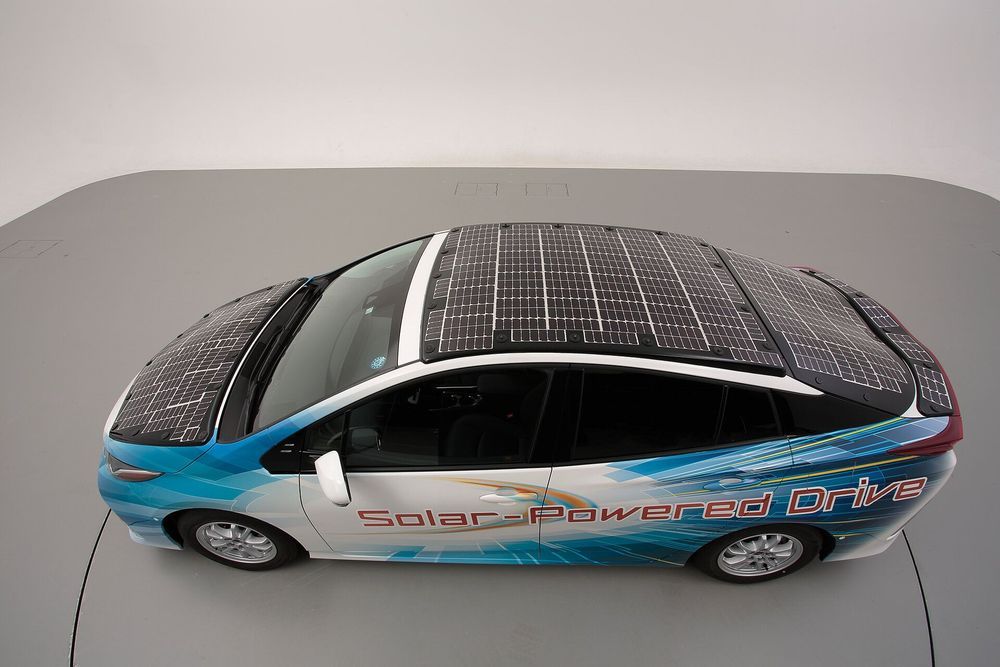They think gene-editing is a risk worth taking — if it means their babies will be able to hear.


A vegetable-picking robot that uses machine learning to identify and harvest a commonplace, but challenging, agricultural crop has been developed by engineers.
The ‘Vegebot’, developed by a team at the University of Cambridge, was initially trained to recognise and harvest iceberg lettuce in a lab setting. It has now been successfully tested in a variety of field conditions in cooperation with G’s Growers, a local fruit and vegetable co-operative.
Although the prototype is nowhere near as fast or efficient as a human worker, it demonstrates how the use of robotics in agriculture might be expanded, even for crops like iceberg lettuce which are particularly challenging to harvest mechanically. The results are published in The Journal of Field Robotics.

Efficiently moving water upward against gravity is a major feat of human engineering, yet one that trees have mastered for hundreds of millions of years. In a new study, researchers have designed a tree-inspired water transport system that uses capillary forces to drive dirty water upward through a hierarchically structured aerogel, where it can then be converted into steam by solar energy to produce fresh, clean water.
The researchers, led by Aiping Liu at Zhejiang Sci-Tech University and Hao Bai at Zhejiang University, have published a paper on the new water transport and solar steam generation method in a recent issue of ACS Nano. In the future, efficient water transport methods have potential applications in water purification and desalination.
“Our preparation method is universal and can be industrialized,” Liu told Phys.org. “Our materials have excellent properties and good stability, and can be reused many times. This provides the possibility for large-scale desalination and sewage treatment in the future.”

Beryllium, a hard, silvery metal long used in X-ray machines and spacecraft, is finding a new role in the quest to bring the power that drives the sun and stars to Earth. Beryllium is one of the two main materials used for the wall in ITER, a multinational fusion facility under construction in France to demonstrate the practicality of fusion power. Now, physicists from the U.S. Department of Energy’s (DOE) Princeton Plasma Physics Laboratory (PPPL) and General Atomics have concluded that injecting tiny beryllium pellets into ITER could help stabilize the plasma that fuels fusion reactions.
Experiments and computer simulations found that the injected granules help create conditions in the plasma that could trigger small eruptions called edge-localized modes (ELMs). If triggered frequently enough, the tiny ELMs prevent giant eruptions that could halt fusion reactions and damage the ITER facility.
Scientists around the world are seeking to replicate fusion on Earth for a virtually inexhaustible supply of power to generate electricity. The process involves plasma, a very hot soup of free-floating electrons and atomic nuclei, or ions. The merging of the nuclei releases a tremendous amount of energy.
We know that the rule “nothing lasts forever” holds true for everything. But the world of quantum particles doesn’t always seem to follow the rules.
In the latest findings, scientists have observed that quasiparticles in quantum systems could be virtually immortal. These particles can regenerate themselves after they have decayed — and this can have a significant impact on the future of quantum computing and humanity itself.
This finding stands up directly against the second law of thermodynamics which basically says that things can only break down and not reconstruct again. However, these quantum particle fields can reconstruct themselves after decaying – just like the Phoenix rises from its ashes in Greek mythology.

What’s not to like about this concept: high-efficiency solar cells gifting electric cars with mileage.
Bertel Schmitt, The Drive, said, “The solar roof could morph from mostly a marketing-device to a helpful feature.” He noted that, referring to plug-ins, “On a fair-weather day, the juice would be provided by the sun, a big improvement especially for people who don’t have their own garage.”
Toyota has ambitions over the concept and is to start testing an onboard solar recharging system where the hood, the roof, and back are covered with cells. The solar roof can charge while the car is on the move.

Taser bullets aren’t exactly a new concept—a bullet that zaps you with an electric jolt like a Taser.
That’s what the U.S. Marine Corps wants as a non-lethal munition that can be fired from a regular small arm. The U.S. military has been trying to develop a Taser-like bullet for 12 years but has yet to succeed. This time, the Marines hope to get it right.
The U.S. military already uses regular X-26 Tasers, pistol-like devices that fire two wired electrode darts that transmit a jolt to incapacitate a target. But not surprising for a device designed for civilian police forces, the wires limit an accurate shot to less than 25 feet, and the target is disabled for only about 5 seconds.
From returning to the Moon to establishing outposts on Mars, NASA has the need for more power than ever before. Could nuclear fission be the solution they’ve been searching for?
Watch more Focal Point! | https://bit.ly/2J9b9LC
Demonstration Proves Nuclear Fission System Can Provide Space Exploration Power
https://www.nasa.gov/press-release/demonstration-proves-nucl…tion-power
“NASA and the Department of Energy’s National Nuclear Security Administration (NNSA) have successfully demonstrated a new nuclear reactor power system that could enable long-duration crewed missions to the Moon, Mars and destinations beyond.”
NASA to Test Fission Power for Future Mars Colony
https://www.space.com/37348-nasa-fission-power-mars-colony.html
“As NASA makes plans to one day send humans to Mars, one of the key technical gaps the agency is working to fill is how to provide enough power on the Red Planet’s surface for fuel production, habitats and other equipment. One option: small nuclear fission reactors, which work by splitting uranium atoms to generate heat, which is then converted into electric power.”
Ideas for new NASA mission can now include spacecraft powered by plutonium
https://www.theverge.com/2018/3/19/17138924/nasa-discovery-p…tonium-238
“Discovery proposals can now incorporate a type of power system known as a radioisotope thermoelectric generators, or RTGs. These generators are powered by radioactive material — a type of metal called plutonium-238.”
Sign Up For The Seeker Newsletter Here — http://bit.ly/1UO1PxI

About 80% of all the matter in the cosmos is of a form completely unknown to current physics. We call it dark matter, because as best we can tell it’s…dark. Experiments around the world are attempting to capture a stray dark matter particle in hopes of understanding it, but so far they have turned up empty.
Recently, a team of theorists has proposed a new way to hunt for dark matter using weird “particles” called magnons, a name I did not just make up. These tiny ripples could lure even a fleeting, lightweight dark matter particle out of hiding, those theorists say. [The 11 Biggest Unanswered Questions About Dark Matter]
We know all sorts of things about dark matter, with the notable exception of what it is.

By Donna Lu
It’s the smartest piece of glass in the world. Zongfu Yu at the University of Wisconsin–Madison and his colleagues have created a glass artificial intelligence that uses light to recognise and distinguish between images. What’s more, the glass AI doesn’t need to be powered to operate.
The proof-of-principle glass AI that Yu’s team created can distinguish between handwritten single digit numbers. It can also recognise, in real time, when a number it is presented with changes – for instance, when a 3 is altered to an 8.